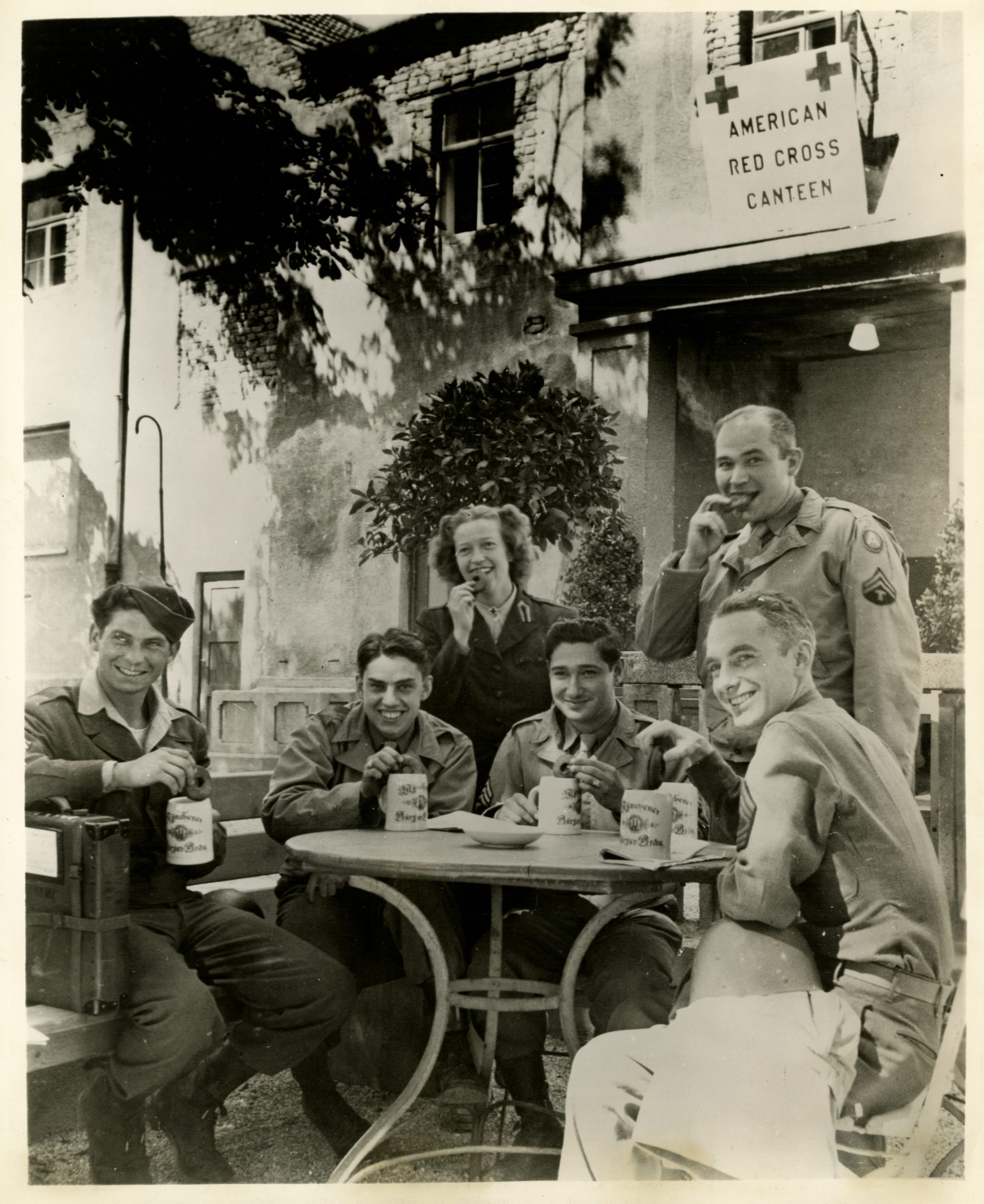The American Red Cross had over seven million volunteers during World War II and provided many services and supplies that impacted the war and troops1. It was the only civilian service that was permitted to work overseas with the military. Known for its high standards, the Red Cross selected its recruits on the basis of their interpersonal skills, education level, and letters of recommendation.
One of the main groups of women volunteers was called “Donut Dollies” who worked overseas in mobile service clubs providing food and entertainment to troops2. They administered donuts and coffee as well as a “taste of home” for the men fighting for their country. These women served all over Europe during World War II including Great Britain, France, Germany, Italy, Belgium, and Luxemburg from 1942-1946. Women had to apply specifically to go abroad to potentially unsafe locations to raise their spirits and provide some normalcy to soldiers.
Clubmobiles were created to reach the isolated spots and front-line posts. Most Clubmobiles were a single decker bus outfitted with equipment to make fresh donuts on camps and bases for servicemen. Each Clubmobile was assigned a driver and three American Red Cross women volunteers.
The Clubmoblies also provided magazines, newspapers, chewing gum, and cigarettes to soldiers. Some vehicles also had phonographs with loudspeakers to play music for the soldiers.
Some Donut Dollies like Margaret Lamb from Norfolk, Virginia had to go on foot and carry the donuts and coffee to soldiers as roads were too rough for the Clubmobiles.
Some locations were too remote and the American Red Cross volunteers like Lucy Shields of Farmville, VA, and Marion Deavor of Brevard, NC helped load planes with donuts in Sardinia, Italy.
While the Donut Dollies did work that is considered “traditional” women’s work, (cooking, cleaning, and waiting on men) the work required both physical and emotional labor as well as included administrative and interpersonal skills. While the women were there to provide entertainment and treats to the servicemen, their uniforms were not traditionally feminine but were designed in a military style, resembling those of soldiers, and included necessary items such as combat boots for the long walks to isolated camps.
Red Cross women and Donut Dollies spent thousands of hours with servicemen and learned about their lives and combat experiences. The Clubmobile women volunteers looked at pictures of girlfriends and wives and listened to soldiers’ stories of missed life at home. By listening to traumatized troops, these women provided emotional and psychological support before Post-Traumatic Stress Disorder had become known or accepted diagnosis. Many servicemen remembered the women and how they helped supply not only doughnuts but lightened the load of homesickness and anxiety4. These women volunteered and carried out their duties in foreign countries and cultures with limited resources.
The tradition and importance of the Donut Dollies in the American Red Cross continued into the Korean and Vietnam Wars.
If you are interested in World War II history, the Library received a grant from the National Endowment for the Humanities to digitize our 250,000 separation notices of WWII veterans. Currently, the separation forms from the United States Marine Corp are available online for members of the public to help transcribe. The information gathered from the transcriptions will provide insight to the military and civilian lives of both male and female veterans.
Footnotes
[1] “World War II and the American Red Cross,” American Red Cross, https://www.redcross.org/content/dam/redcross/National/history-wwii.pdf.
[2] “World War II: ‘Donut Dollies’ & the American Red Cross.” Division of Historical and Cultural Affairs – State of Delaware, April 5, 2021. https://history.delaware.gov/ww-ii-donut-dollies-the-american-red-cross/.
[3] RedCrossNW. (2021, June 3). The wartime tales of Red Cross Donut Dollies. American Red Cross NW Region. https://redcrossnw.org/2021/06/03/the-wartime-tales-of-red-cross-donut-dollies/
[4] Madison, J. H. Wearing lipstick to war. National Archives and Records Administration. https://www.archives.gov/publications/prologue/2007/fall/lipstick.html
Header Image Citation
Munich, Germany, Sept, 1945
Left to Right: Sgt. Alex Henig, Brooklyn, NY; Pfc. Dante D. Semproni, Mt. Kisco, NY; T4 Edward Karp, Norfolk, VA, MSgt. Ray Bower, Jacksonville, FL;
Standing: Barbara Bowen, Holyoke, MA; T5 Rollen L. Koons, Bucyrus, OH
Photo by: Hazel Kingbury, American Red Cross Photographer










